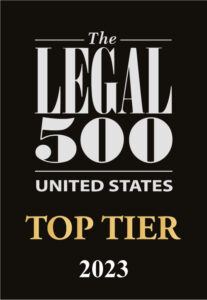In Matter of Body Wise International LLC (OTA Case No. 19125567; 2022 – OTA – 340P), a California-based retailer collected amounts designated as “tax” related to jurisdictions where it was not registered to collect tax. The California Office of Tax Appeals (OTA) held that the retailer must remit those amounts to California, even though the sales were not taxable in California, because the retailer did not actually pay the “tax” amounts it collected to the other states nor did it refund those amounts to its customers.
Body Wise International, LLC sold weight loss supplements to customers across the country and shipped the products directly to customers via common carrier from its warehouse in California. During the periods at issue, Body Wise’s tax software program charged a “Tax Amount” on all sales to customers located in various states based upon the respective tax rates in those other states. In states where Body Wise had not registered to charge or collect tax, Body Wise did not remit the “tax” collected to those states.
On audit, the California Department of Tax and Fee Administration (CDTFA) determined that the “Tax Amounts” Body Wise collected in those other states constituted excess sales tax reimbursements under California Revenue & Taxation Code (R&TC) section 6901.5, which provides that a retailer who collects a sales tax reimbursement exceeding the amount of the sales tax liability imposed upon the sale must remit the excess to the customer or to the state. CDTFA concluded that those amounts collected but not paid over to the other states must either be returned to the customer or remitted to California.
Upon appeal, the OTA agreed with CDTFA. OTA first observed, “it is not necessary for a sale, purchase, or any other type of transfer for consideration to be subject to California’s sales tax in order for the excess tax reimbursement provisions of R&TC section 6901.5 to apply.” Rather, OTA then stated, the requirement to remit or refund excess sales tax reimbursement to CDTFA applied to Body Wise even where the underlying transaction was nontaxable or exempt in California. Based upon this, OTA concluded that Body Wise must remit those amounts collected to California. OTA supported its conclusion by observing that Body Wise was not registered to collect sales tax in some or all of the other states.
However, logically, the excess tax reimbursement covered by the statute must be excess California tax reimbursement in the first instance. Indeed, the statute by its own terms expressly applies to “taxes due under this part [the California Sales and Use Tax Law].” (Cal. Rev. & Tax. Code § 6901.5.) Because these were not taxes due to California but ostensibly to the other states, California’s attempt to abscond with revenues belonging to another state would appear to be unconstitutional as violating the sovereignty of that other state.
The OTA’s conclusion would seem to be at odds with the important maxim of statutory construction to avoid an interpretation of the statute that would render it [...]
Continue Reading
read more



 Subscribe
Subscribe



